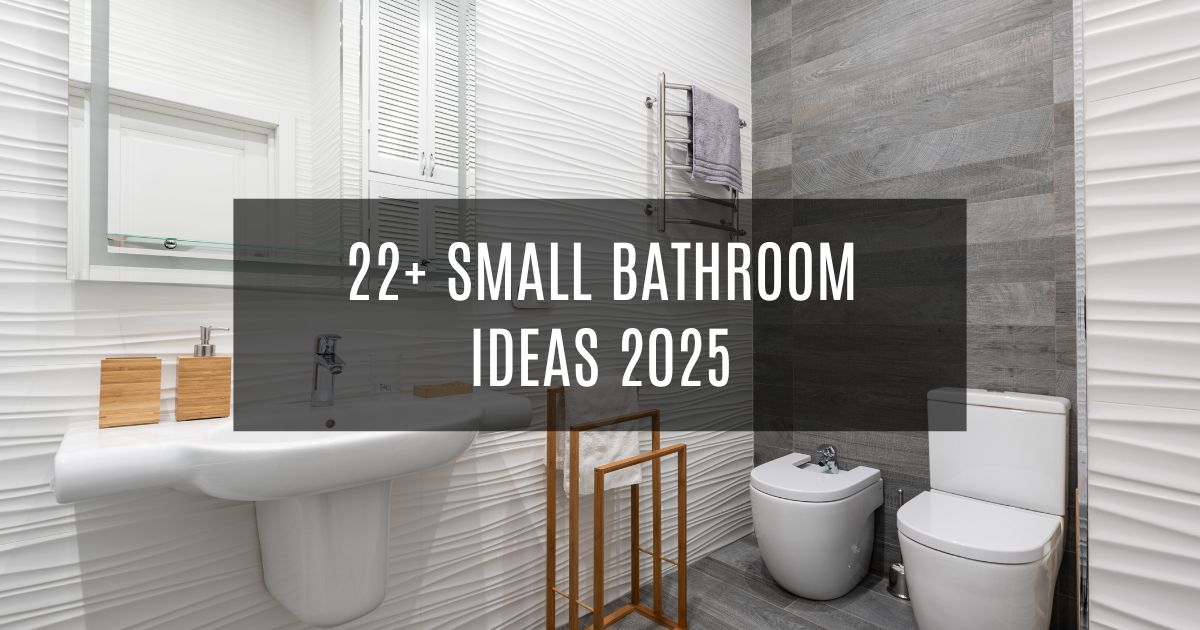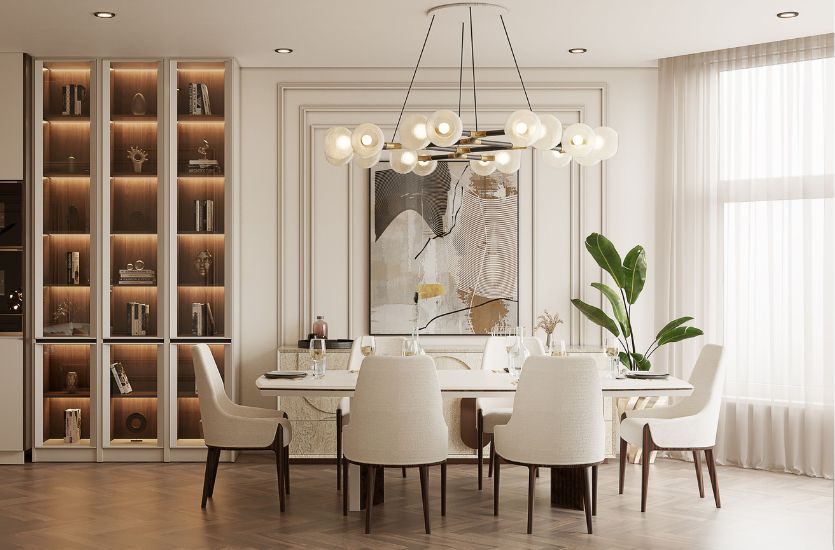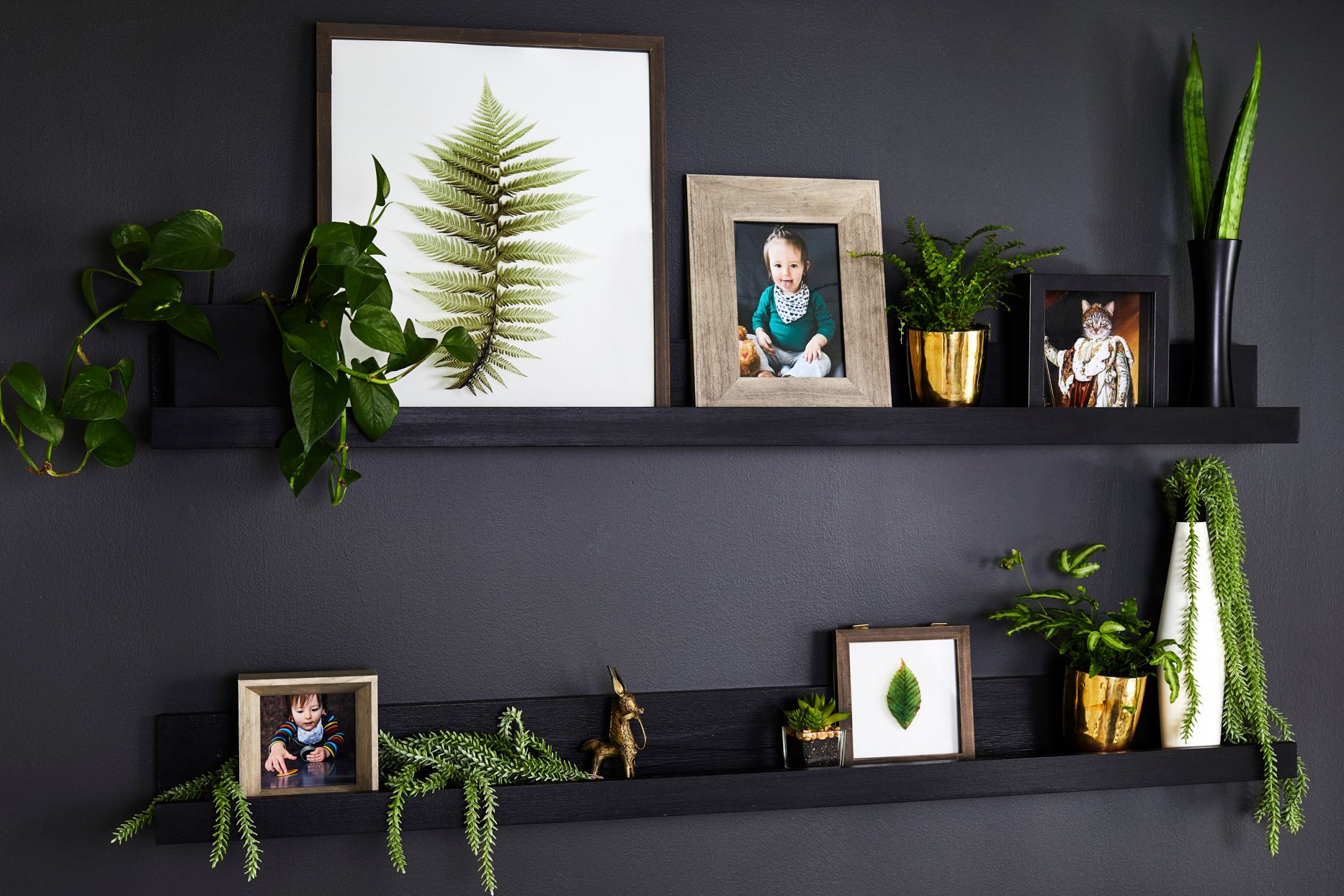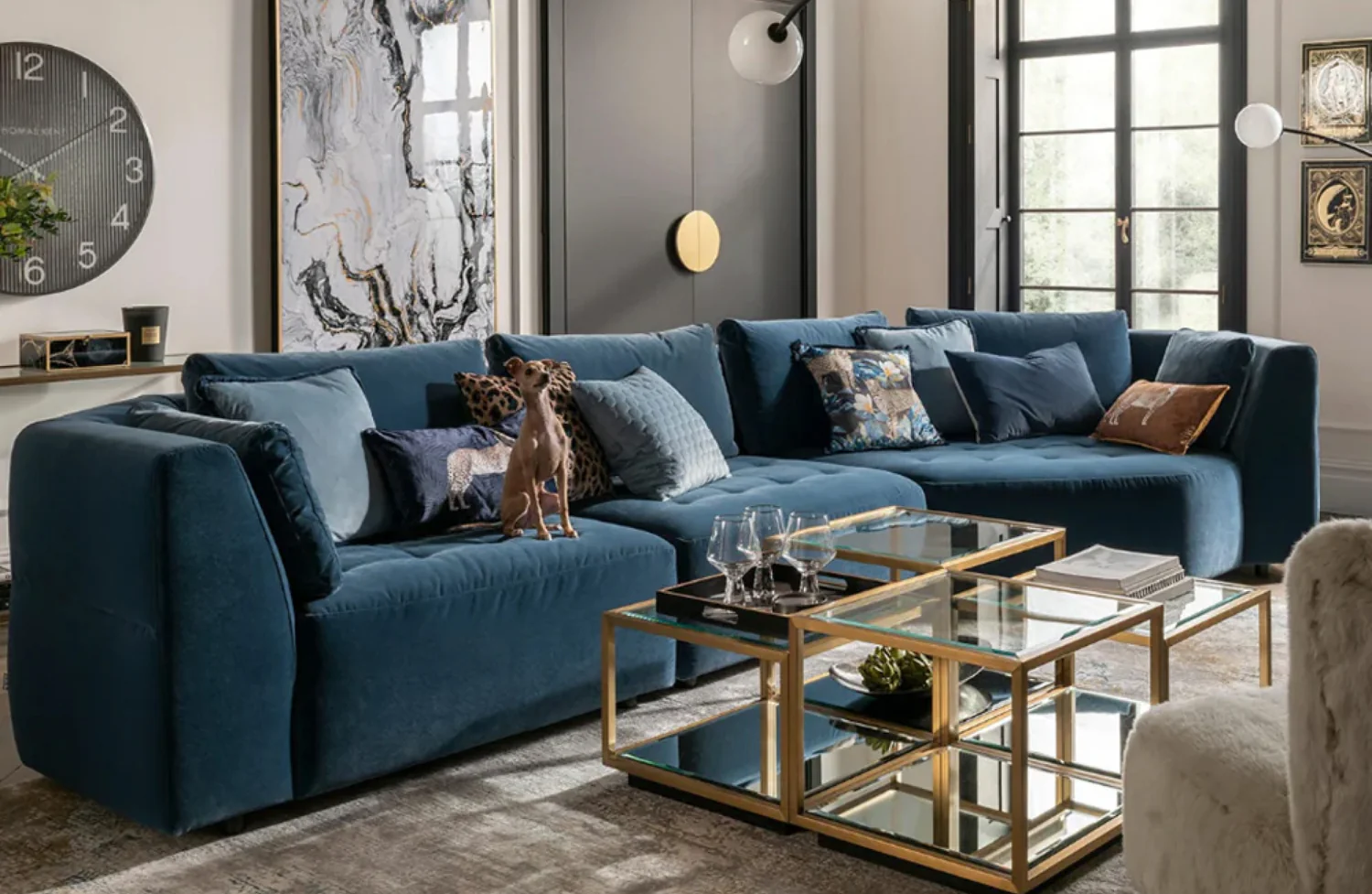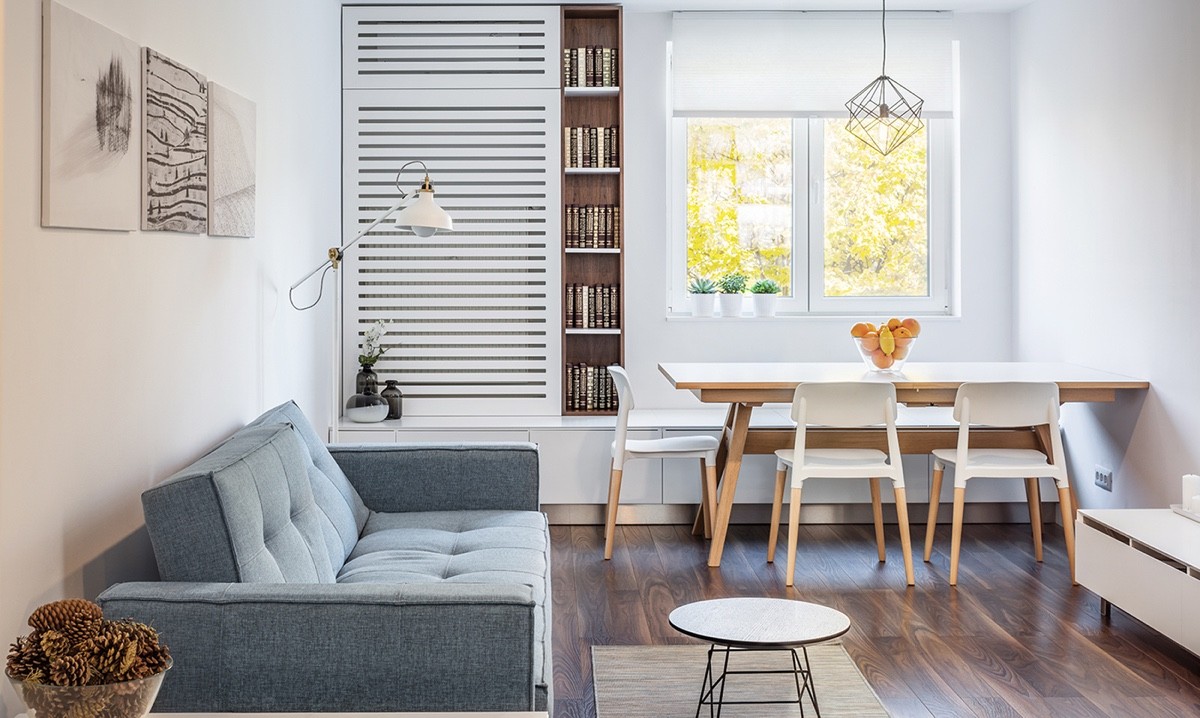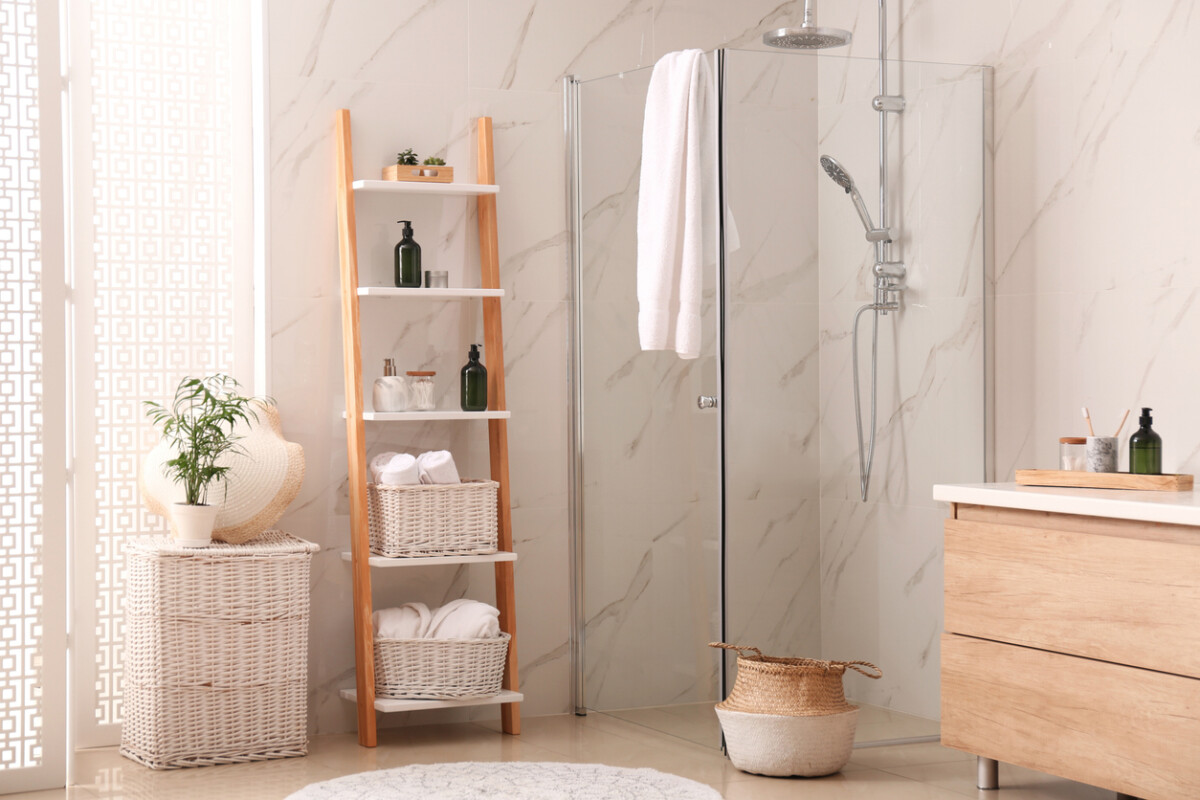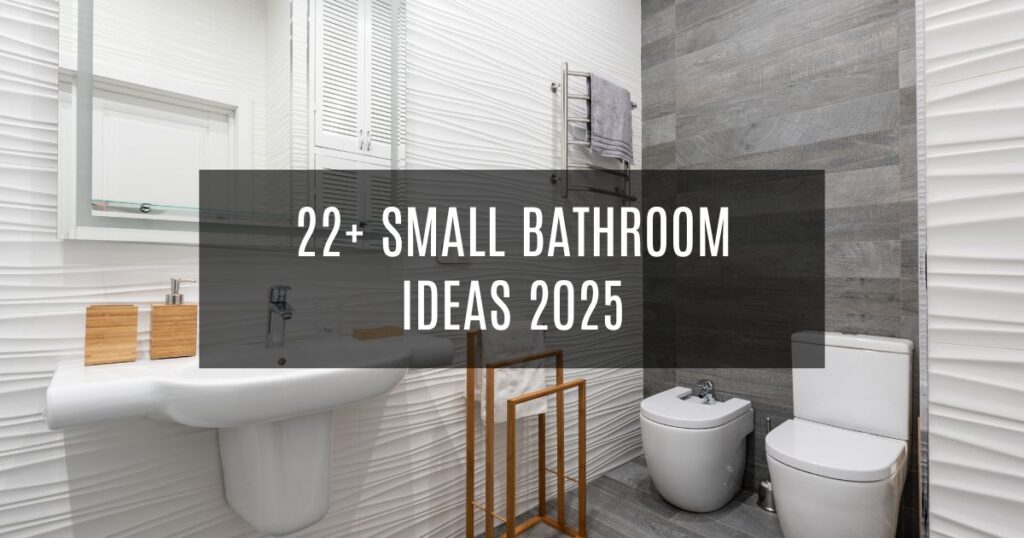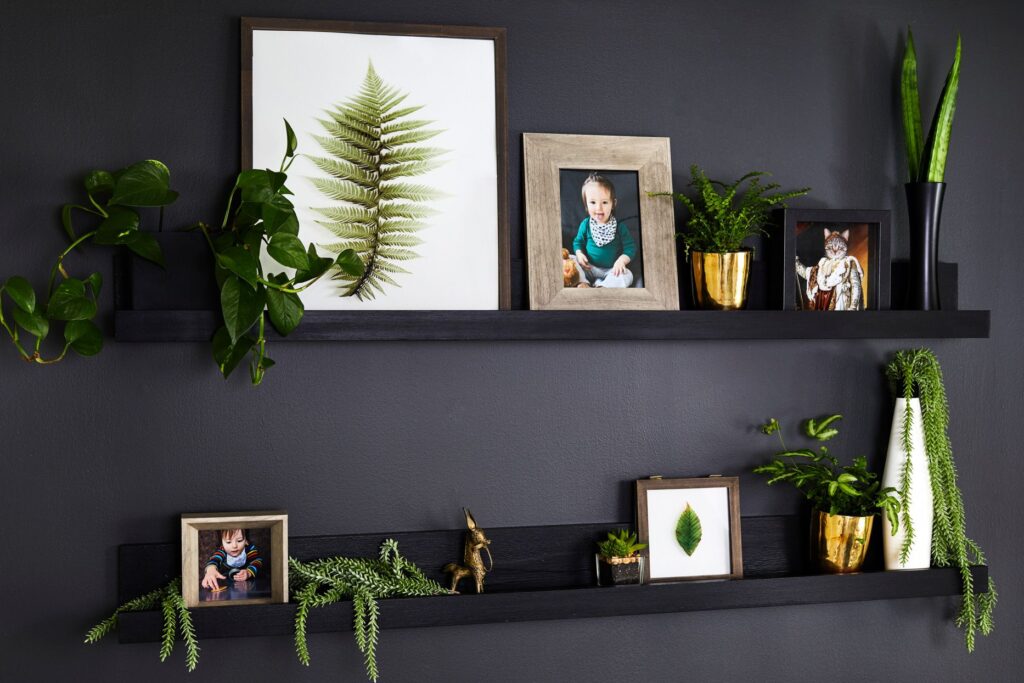When you think about creating a garden, you might imagine sprawling lawns and flower beds stretching as far as the eye can see.
However, if your available outdoor space is limited—be it a small balcony, a compact patio, or even just a windowsill—you shouldn’t let that stop you from enjoying the benefits of nature right at home.
You can build a vibrant, lush garden in virtually any space, as long as you tap into the right ideas and strategies. By embracing creative solutions like vertical gardening, container planting, and clever use of color, you will discover that even the tiniest plots can be transformed into green havens that soothe both your eyes and mind.
Picture the joy of stepping into your little oasis first thing in the morning to gather fresh herbs for breakfast or simply to inhale the sweet scent of blooming flowers. Small gardens aren’t just about growing plants; they’re about crafting a personal sanctuary where you can retreat from the hustle of daily life. There is an undeniable connection between humans and the natural world, and by maximizing every inch of space you have—even if it’s just a small corner of an apartment—you’ll foster a nurturing environment that can significantly improve your mental and physical well-being.
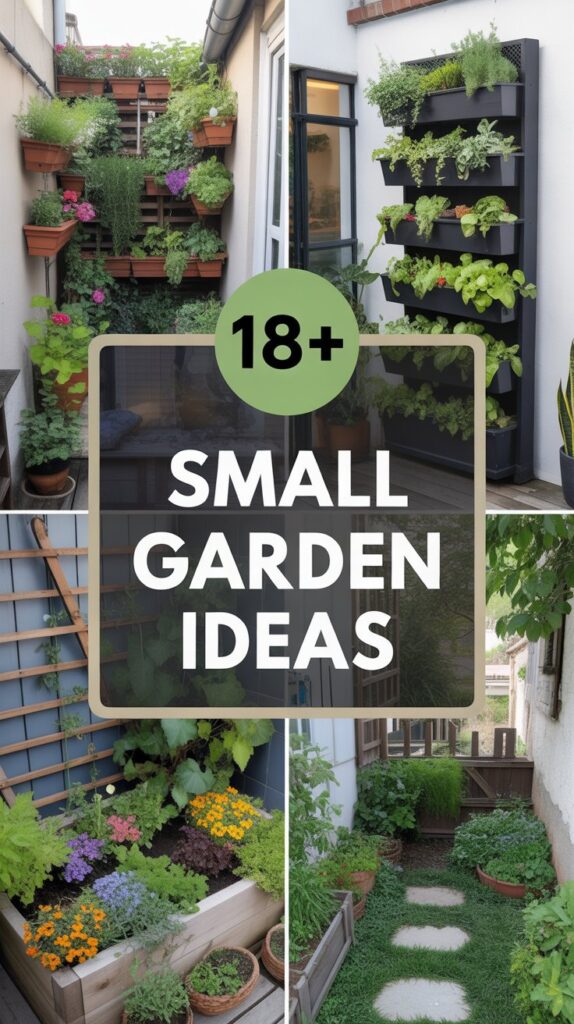
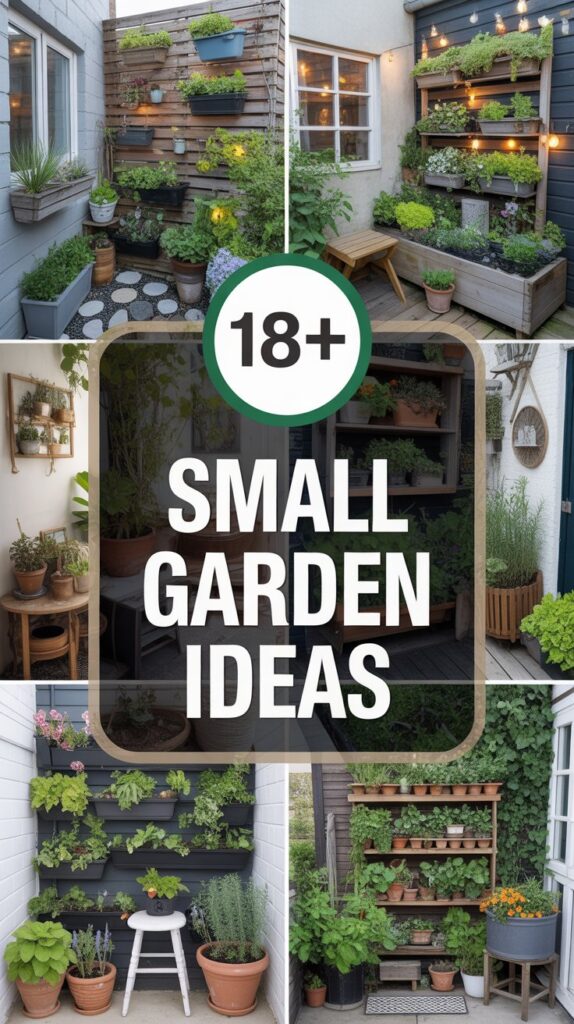
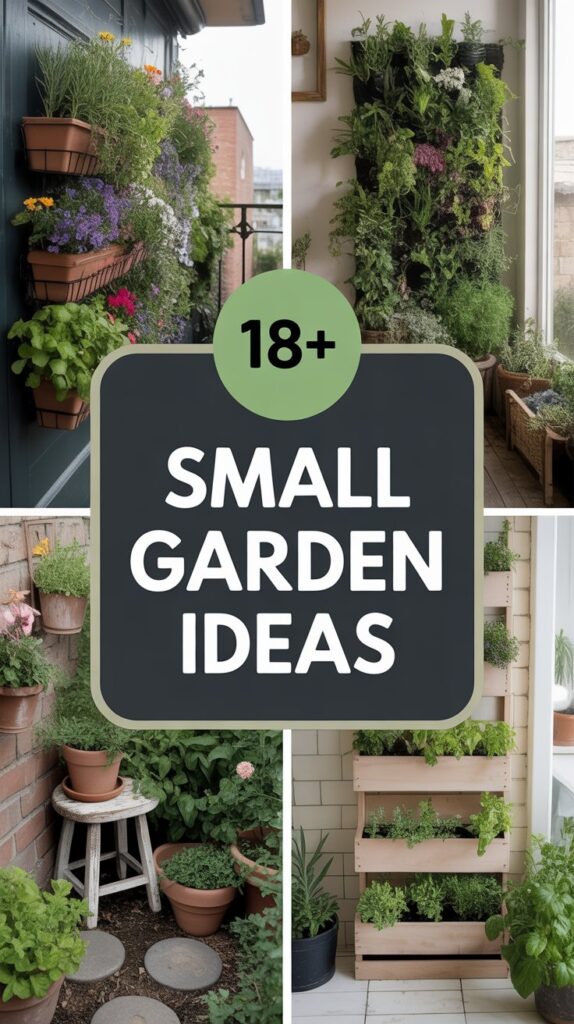
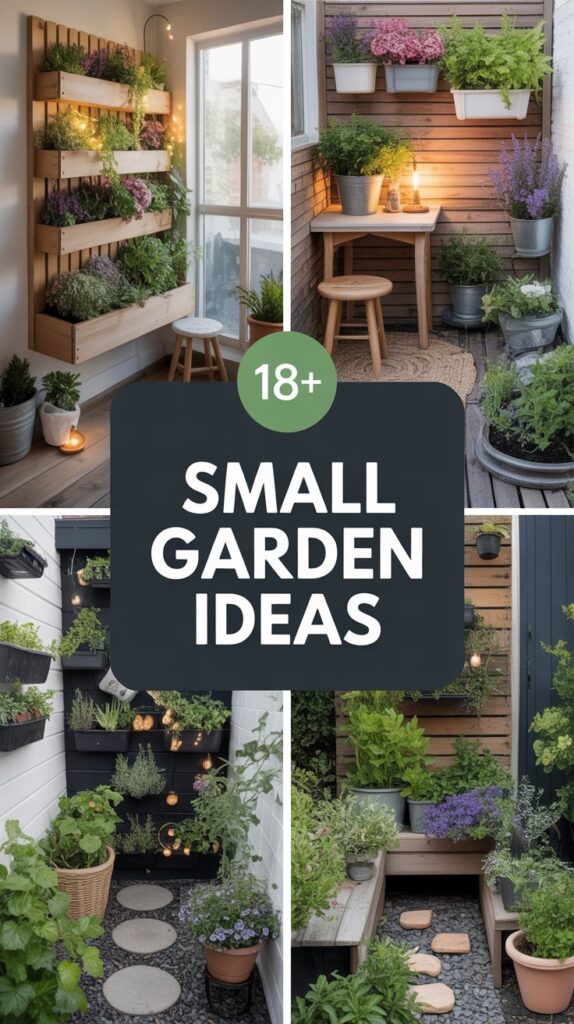
In this article, you’ll uncover 18+ small garden ideas designed to inspire you into action. Each concept is tailored to help you optimize whatever space you have, from hanging baskets in tight corridors to DIY trellises against a sunny wall. By the time you reach the end, you’ll have a host of practical suggestions and design tips that will spur you to get your hands in the soil—no matter how restricted your gardening area may be. So get ready to explore a world where creativity meets nature, and you’ll soon discover that size truly doesn’t limit your green thumb ambitions.
Table of Contents
- 18+ Small Garden Ideas
- 1. Container Gardening
- 2. Vertical Gardens
- 3. Hanging Baskets and Planters
- 4. Pallet Gardens
- 5. Raised Beds for Compact Spaces
- 6. Windowsill Herb Garden
- 7. Balcony Herb Rail Planters
- 8. Succulent Gardens
- 9. DIY Trellis Gardens
- 10. Mini Greenhouse Kits
- 11. Courtyard Garden Makeover
- 12. Pocket Planters or Wall Pouches
- 13. Window Boxes
- 14. Upcycled Garden Décor
- 15. Tiered Plant Stands
- 16. Fairy or Miniature Gardens
- 17. Micro Orchard in Pots
- 18. Zen Garden Corners
- 19. Small Water Features
- 20. Clever Lighting Schemes
- Conclusion
- FAQs
18+ Small Garden Ideas
Below, you’ll find more than 18 exciting and practical ways to enhance or create your own small garden. Feel free to mix and match these ideas, and let them serve as inspiration to tailor your garden to your unique preferences and available space.
1. Container Gardening
Container gardening is perhaps the most versatile approach when working with limited space. Whether you have a sunny windowsill, a narrow balcony, or a tiny patio, you can place containers of different sizes and shapes to add variety. The best part is that you can move containers around to optimize sunlight or revamp your setup whenever you please.
- Versatile Plant Choices: You can grow herbs, leafy greens, flowers, and even small fruit trees in containers.
- Easy Maintenance: Because each plant has its own pot, you can water and fertilize them individually according to their unique needs.
- Design Tip: Vary the heights and shapes of your containers for a visually engaging display, and consider using matching pots for aesthetic cohesion.
Container gardening is also a wonderful solution if you have mobility concerns, as you can raise containers to a comfortable height, making planting, pruning, and harvesting less strenuous.
2. Vertical Gardens
If you’re struggling with ground space, why not grow upward? Vertical gardens allow you to utilize walls, fences, or trellises to create a lush, living tapestry of greenery. Think of it as creating a vertical canvas where plants can cascade or climb.
- Maximize Limited Floor Space: You’ll still have room for outdoor seating or storage below your vertical plants.
- Structural Variety: Use hanging planters, pocket planters, or mount small pots on wooden pallets. Each approach can bring a unique aesthetic to your space.
- Plant Selection: Vines like ivy, climbing roses, or morning glories work beautifully, while herbs such as thyme, oregano, or even strawberries can thrive in pockets.
By positioning your vertical structures in the best possible lighting, you’ll give your plants ample sun exposure without sacrificing your precious ground real estate.
3. Hanging Baskets and Planters
When your square footage is at a premium, consider adding greenery from above. Hanging baskets and planters make it easy to take advantage of overhead space, such as along beams or the edges of balconies. This solution is particularly useful if you have pets or small children, as it keeps delicate or toxic plants out of reach.
- Ideal Plants: Trailing varieties like petunias, fuchsias, ivy, and spider plants add graceful drapes of greenery or color.
- Watering Tips: Be mindful that hanging planters can dry out faster than ground-level containers. Use moisture-retaining potting mix and water regularly.
- Aesthetic Appeal: Vary the lengths of your hanging planters and mix different types of foliage for a lush, layered look.
Hanging planters can also be a stylish statement, acting as living chandeliers that instantly freshen up your compact outdoor space.
4. Pallet Gardens
Wooden pallets can be turned into efficient, space-saving gardens that can be leaned against a wall or fence. They are readily available, often free from local businesses, and can be easily customized.
- Easy Assembly: Fill the pallet with potting soil and secure landscape fabric behind the slats to keep the soil from spilling out.
- Plant Choices: Herbs, succulents, and small flowers do extremely well in pallet compartments.
- Vertical or Horizontal: You can stand the pallet vertically for a vertical garden or lay it flat to use as a raised bed.
Pallet gardens are an eco-friendly option that encourages upcycling and lets you exercise your DIY skills for a functional, personalized small garden.
5. Raised Beds for Compact Spaces
Raised beds are fantastic if you have a small patch of ground but want more control over soil quality, drainage, and plant spacing. Whether you use wooden boxes or pre-built plastic frames, raised beds help keep your garden organized and can be tailored to the exact dimensions you need.
- Improved Soil Health: You can fill raised beds with nutrient-rich soil, ensuring plants have the best start.
- Less Weeding: Weeds are often reduced in well-maintained raised beds, making your gardening chores more manageable.
- Accessible Gardening: By elevating the soil level, raised beds make it easier on your back and knees when planting and harvesting.
Raised beds also give you the flexibility to create geometric designs, allowing you to section off your limited space in an aesthetically pleasing way.
6. Windowsill Herb Garden
If you have virtually no outdoor space, a windowsill garden can be your next best option. You’ll still benefit from fresh herbs and a splash of greenery, all within arm’s reach when cooking.
- Herb Favorites: Basil, mint, parsley, and chives thrive on sunny windowsills.
- Light Requirements: Make sure the windowsill you choose gets ample daylight—ideally six hours or more of sunlight.
- Watering and Drainage: Choose pots with drainage holes and water your herbs regularly, as indoor conditions can dry soil quickly.
Not only will you enjoy the taste of fresh herbs in your meals, but you’ll also bring an element of nature indoors, brightening up your kitchen or living area.
7. Balcony Herb Rail Planters
For apartment dwellers, rail planters along a balcony or terrace can transform your space. By planting herbs in these rail-hugging containers, you make the most of a sunny ledge without taking up valuable floor space.
- Select Sturdy Planters: Ensure your rail planters are firmly secured to handle winds or accidental knocks.
- Best Herbs: Thyme, rosemary, and sage can withstand a range of weather conditions and produce rich scents and flavors.
- Combine for Color: Mix edible flowers like nasturtiums or pansies with your herbs to add color and attract pollinators.
Balcony rail planters turn an ordinary edge into a flourishing mini-farm, all while keeping your balcony floor free for seating or decorative elements.
8. Succulent Gardens
Succulents are perfect if you want greenery but have limited time for maintenance. They require minimal water, tolerate a range of temperatures, and come in many shapes and colors, making them visually striking.
- Soil Considerations: Use a well-draining cactus mix to avoid root rot.
- Containers: Succulents do well in shallow trays, teacups, or unique upcycled items.
- Placement: Provide plenty of light. While most succulents love direct sun, a few varieties can adapt to lower light conditions.
Because succulents are slow-growing, they’re an excellent choice for small gardens where you need consistent, year-round visual appeal without constant replanting.
9. DIY Trellis Gardens
A DIY trellis can instantly elevate your small garden’s visual appeal. Whether you build one from wooden stakes, bamboo, or repurposed metal rods, a trellis lets climbing plants take advantage of vertical height.
- Climbing Varieties: Try climbing beans, peas, or cucumbers if you want fresh produce. For ornamentals, morning glories and clematis offer vibrant blooms.
- Customization: You can paint or stain the trellis to match your outdoor décor.
- Efficient Space Use: By training your plants to grow vertically, you free up ground space for other varieties or seating.
With a DIY trellis, you can transform an empty corner into a thriving, upward garden bursting with color and foliage.
10. Mini Greenhouse Kits
If you’re looking to extend your growing season or protect delicate plants, a mini greenhouse could be the perfect addition. These compact structures are often made of plastic or glass, fitting neatly on patios or balconies.
- Year-Round Gardening: Shield your plants from frost, heavy rain, or scorching heat, enabling you to garden in more extreme conditions.
- Seed Starting: Mini greenhouses are perfect for germinating seeds before planting them in containers or raised beds.
- Adjustable Shelves: Most mini greenhouse kits include multiple tiers, allowing you to organize your plants efficiently.
While slightly more of an investment, a mini greenhouse provides a controlled environment to help you nurture a variety of plants in a small space.
11. Courtyard Garden Makeover
If you have a small courtyard, transform it into a lush retreat by combining different garden elements. Incorporate tall plants near the walls, add a statement water feature or a garden bench, and use lighting to highlight focal points.
- Multi-Tiered Planting: Place taller plants or shrubs at the back, medium-height blooms in front, and groundcovers or small potted flowers at the forefront.
- Patio Furniture: Even a compact bistro set can create a cozy dining nook.
- Ambiance: Use lanterns, fairy lights, or solar-powered path lights to add warmth and charm in the evenings.
A well-designed courtyard garden can feel intimate and private, offering a tranquil escape from your daily routine.
12. Pocket Planters or Wall Pouches
Pocket planters are fabric or plastic pouches you can mount directly onto walls or fences, each “pocket” holding an individual plant. These systems are excellent if you have a bare, sunlit wall you’d like to cover with greenery or flowers.
- Flexible Arrangement: Fill pockets with trailing plants, colorful flowers, or even herbs. Rearrange or replace individual pockets easily.
- Maintenance: Ensure proper drainage to avoid waterlogged pockets that can lead to mold or root rot.
- Vertical Interest: This approach offers a living wall effect that’s both decorative and space-saving.
Pocket planters are another twist on vertical gardening, perfect for anyone looking to maximize every square inch of available surface area.
13. Window Boxes
Window boxes are timeless when it comes to small garden solutions. They let you display colorful blooms right outside your window, enhancing curb appeal and giving you an instant view of nature.
- Plant Pairings: Mix cascading flowers like lobelia or wave petunias with upright plants such as geraniums for a balanced arrangement.
- Materials: Choose from wood, metal, or plastic boxes depending on your style and budget.
- Routine Care: Windowsill boxes often dry out fast, so regular watering and occasional fertilizer will keep your flowers thriving.
With window boxes, you can enjoy the fragrance and visual delight of fresh flowers every time you glance outside, turning even a tiny urban setting into a charming, plant-filled paradise.
14. Upcycled Garden Décor
Get creative by repurposing old items into unique planters or garden accents. Old tires, wooden crates, metal cans, and even vintage teapots can serve as quirky containers for your plants.
- Sustainability: Upcycling reduces waste and gives new life to unwanted materials.
- Personal Touch: Paint or decorate your recycled planters to reflect your personal style.
- Versatile Placement: Upcycled pieces can be displayed on steps, hung from railings, or positioned along walls.
Not only does upcycling save money, but it also brings an artistic flair to your garden that sets it apart from cookie-cutter designs.
15. Tiered Plant Stands
Tiered plant stands are like miniature staircases for your garden, allowing you to display multiple rows of plants without occupying a large footprint. You can find ready-made stands or build one from recycled wood.
- Emphasize Focal Points: Place your favorite or most eye-catching plants at eye level for maximum impact.
- Organized Layout: Keep shade-loving plants on lower tiers and sun-loving plants higher up if the stand is placed outdoors.
- Portability: Many plant stands are lightweight, allowing you to reposition them as seasons change or to experiment with different layouts.
Tiered stands are a simple yet effective way to layer plants and show them off, especially if you have a small patio or deck.
16. Fairy or Miniature Gardens
Small gardens aren’t just for grown-ups. You can also indulge your playful side by creating a fairy or miniature garden. These whimsical setups incorporate tiny houses, miniature furniture, and scaled-down figurines alongside your plants.
- Ideal Container Choices: Large, shallow dishes or raised troughs are perfect for constructing little scenes.
- Plant Selection: Look for miniature varieties of succulents, dwarf shrubs, or mosses to maintain the illusion of a tiny world.
- Personal Theme: Build a woodland fairy village, a beach-inspired scene, or a magical gnome hideaway—the possibilities are endless.
Creating a miniature garden can also be a fun family project, inviting you to unleash your imagination while still honing your gardening skills.
17. Micro Orchard in Pots
Who says fruit trees are only for big backyards? Dwarf or miniature fruit trees can thrive in pots on patios or balconies, offering you the joy of homegrown produce in even the smallest spaces.
- Citrus Selections: Dwarf lemon, lime, or mandarin trees often do well in containers and bring fragrant blooms.
- Maintenance: Prune your trees to maintain a manageable shape and ensure they get enough sunlight.
- Fertilizer Needs: Container-grown fruit trees benefit from regular feeding to replace nutrients lost through watering.
Imagine the thrill of harvesting your own lemons or apples in a confined area, proving that orchard dreams can indeed come in all sizes.
18. Zen Garden Corners
If you crave a peaceful retreat, dedicate a small corner to a Zen-inspired garden. By incorporating elements like smooth pebbles, a mini sand garden, and carefully placed greenery, you can create a meditative spot in minimal space.
- Simplicity is Key: Stick to a limited color palette and minimal plant variety for a tranquil effect.
- Use of Stones: Rake patterns into sand or gravel, allowing the repetitive motion to soothe your mind.
- Minimal Maintenance: Since Zen gardens often focus on stones and minimal plantings, upkeep is relatively straightforward.
A Zen corner can turn even the busiest home environment into a sanctuary of calm, perfect for meditating, reflecting, or simply taking a break from daily stresses.
19. Small Water Features
Water elements add a sense of tranquility to a garden, and you don’t need a big pond to reap the benefits. A small fountain or a tabletop water feature can bring the soothing sound of running water into even the tightest of spaces.
- Solar-Powered Options: Choose a solar-powered pump to reduce energy costs and simplify setup.
- Placement: Keep the water feature where you can enjoy its sights and sounds most, such as near seating areas.
- Maintenance: Regularly clean the pump and top off water levels to prevent algae buildup.
The gentle babble of water can make your small garden feel like a serene retreat, providing a natural soundtrack to your outdoor relaxation.
20. Clever Lighting Schemes
While lighting may not be an obvious “garden idea,” it’s crucial for extending the usability of your small outdoor space into the evening. A well-lit garden not only looks magical but also enhances safety.
- String Lights: Drape fairy lights across fences, railings, or above seating areas for a whimsical glow.
- Spotlighting: Highlight your favorite plant or feature with a focused beam of light.
- Energy-Saving Options: Solar-powered stake lights or lanterns reduce electricity costs and simplify installation.
With strategic lighting, your compact garden can become a cozy nighttime hideaway, perfect for relaxing or entertaining friends well after the sun goes down.
Conclusion
By now, you’ve seen that you can do so much with a small garden, whether it’s a tiny balcony, a narrow patio, or even just a sunny window ledge. The key is to use your space creatively, stacking plants vertically, incorporating containers, or exploring themed setups like Zen corners or fairy gardens. Each idea offers its own set of benefits—some give you quick harvests of fresh herbs or fruits, others transform your limited real estate into a colorful floral display, and many help you cultivate a serene environment without the need for sprawling yards.
Gardening in small spaces is all about innovation and personalization. By experimenting with vertical gardens, hanging baskets, or mini greenhouses, you’ll discover what best suits your lifestyle and aesthetic. Don’t forget to consider accessibility, maintenance needs, and your own unique tastes, whether that involves ornamental flowers, practical herbs, or whimsical accessories. It’s completely possible to reap the joys of a flourishing garden on a smaller scale—and, in many ways, an intimate space can feel even more special and comforting.
No matter which ideas you choose, remember that the most important ingredient is your passion for nurturing plants and creating a corner of nature for yourself. As you embrace these suggestions, you’ll find that having a small garden brings immense rewards in beauty, relaxation, and even sustainability. With a bit of creativity and some dedication, your humble space can become a verdant paradise, proving once and for all that size is no barrier to growing something truly remarkable.
FAQs
1. How can I make the most of a very narrow balcony?
You can maximize a narrow balcony by placing planters along the railings and using vertical structures like trellises or hanging baskets. This leaves the floor free for a small chair or side table. Consider slim, rectangular containers that align neatly against the edges, and choose plants with upright growth habits to save space.
2. What are the easiest plants to grow in a small space for beginners?
Herbs like basil, mint, and parsley are excellent choices for novices. They grow quickly, require minimal care, and can be harvested regularly. Succulents are also beginner-friendly thanks to their low water requirements and resilience to varying conditions.
3. How do I deal with limited sunlight in my small garden?
Focus on shade-tolerant plants like hostas, ferns, and certain types of begonias. If partial sun is available, you can still grow some herbs and vegetables. Consider reflective surfaces like mirrors or light-colored walls to bounce available light around, and move your containers periodically to “chase” the sun if necessary.
4. Can I grow vegetables in a tiny space?
Absolutely. Leafy greens like lettuce, spinach, and kale do well in containers. Cherry tomatoes, peppers, and beans can be grown vertically. Herbs are also a mainstay for container gardening. Just ensure each plant’s pot is deep enough for its root system and receives adequate sunlight.
5. How do I maintain my small garden during harsher seasons?
Use season extenders like mini greenhouses or row covers for cooler months. Move portable containers to sheltered areas during storms or extreme heat. Keep an eye on watering needs; smaller gardens and containers can dry out or freeze faster than larger gardens. Choosing hardy plants or rotating seasonal varieties can also help.

